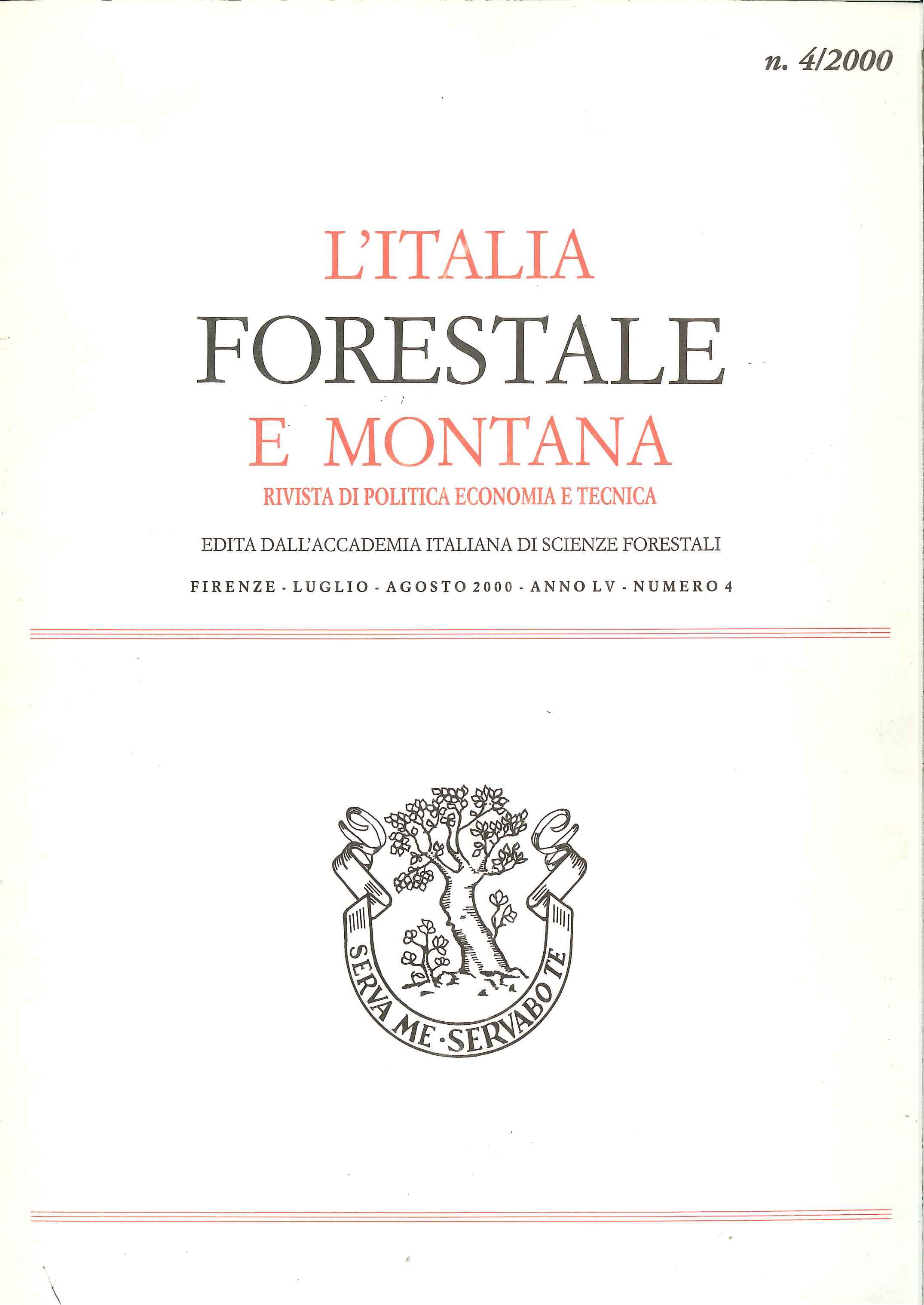Preliminary investigations on vegetation dynamics in artificial stands of Pinus radiata in Central Sardinia
Published 2013-06-13
Copyright (c) 2013 Italian Journal of Forest and Mountain Environments

This work is licensed under a Creative Commons Attribution-NonCommercial 4.0 International License.
Abstract
In warm-arid environments of Central Sardinia – where, to the climate effects are added the ones of fire and grazing, wich increase vegetation regeressive successions – afforestations and artificial stands for wood production may play a major role in contrasting desertification, by starting progressive secondary successions. An experiment was set up in Arci Mountain (north-western Sardinia), aimed to the comparison of five plots: three of them (characterized by different tree cover indexes) are placed in an area afforested 30 years ago by using Pinus radiata, two of them in a contiguous area, characterized by a maquis. In each area data were collected of tree (adult trees and natural regeneration), shrub and herbaceous species. In order to estimate the diversity, both in tree stand and in regeneration layer, two indexes of floristic diversity (Shannon index, Hill’s number N1), a synthetic index structural-floristic (Pretzsch index) and a regeneration index (sensu Magini) were applied. According to the results so far obtained, is emphasized that the canopy reduction – attributable partly to the thinning, partly to the fire – fostered a secondary succession towards the coming of a tree species (Quercus ilex), as well as the highest diversity – compared with the values recorded in the others plots – in the regeneration layer. On the contrary, the phenomenon is absent both in the unthinned stand and in the maquis, where the shrub layer hindered the coming of tree species.

